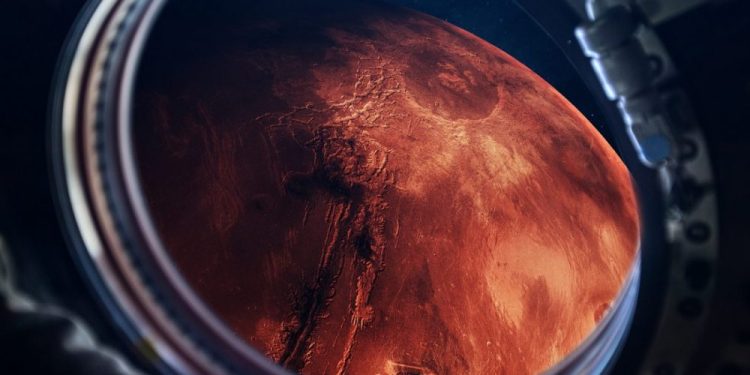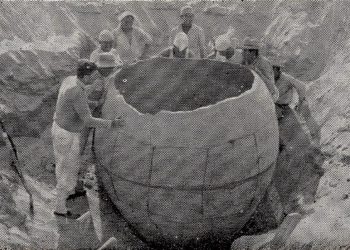Humankind is on the verge of exploring the entire solar system, paving the way for colonization. Mars was the first planet Earth attempted to explore in our journey to expand to the stars. These early exploration attempts taught us numerous lessons that have made subsequent missions to Mars and other places in the solar system more successful.
And if we do actually colonize other moons and planets in the solar system, Mars is likely to be among the first.
But before colonizing it, we must know everything about Mars. This is what we have been doing for the past few decades, thanks to the numerous missions that have traveled to Mars and explored the surface of the red planet in an unprecedented way.
As of now, Mars is being explored by several active missions. According to NASA, InSight, Mars Atmosphere and Volatile EvolutioN (MAVEN), Mars Reconnaissance Orbiter, Curiosity Rover, Mars Express, and Mars Odyssey are still in operation. These missions continue to provide invaluable data about the Red Planet. Moreover, future missions such as the ExoMars Rover and Mars 2020 promise to deepen our understanding even further.
What We Found on Mars
After decades of exploration, the numerous missions that have ventured to Mars—both those still active and those retired—have unearthed an incredible wealth of information about the planet.
1) Martian ‘Blueberries’
In February 2004, NASA’s Opportunity Rover made a sensational discovery after landing on Mars. The rover’s microscopic cameras captured images of small, spherical formations known as ‘Martian blueberries,’ which are composed of hematite, a mineral that forms in water. This finding was pivotal, as it suggested that liquid water once existed on the Martian surface. The presence of these formations was one of the first clues that Mars may have supported environments suitable for life in its past. For more about Opportunity’s discoveries, read this detailed article on Curiosmos.
2) First Meteorite on an Alien Planet
During its mission, Opportunity also became the first rover to discover a meteorite on another planet. This nickel-iron meteorite, found near Opportunity’s heat shield, provided critical insights into Mars’ interaction with space debris. Unlike meteorites commonly found on Earth, this alien rock suggests that Mars experiences different types of meteor impacts.
3) Water on Mars
Mars may appear as a barren, desolate world today, but NASA’s Opportunity Rover provided conclusive evidence that liquid water once existed on the planet. The rover discovered signs of past water flow in Endurance and Victoria Craters, both of which are dotted with hematite deposits. Further studies revealed that water on Mars was likely salty and acidic, shedding light on the planet’s ancient climate. For more on water on Mars, check out our article on Curiosmos.
4) Non-Acidic Water
In a breakthrough discovery, Opportunity found signs of non-acidic water on the edge of Endeavour Crater, where clay deposits were uncovered. These findings suggested that ancient Mars may have had environments with conditions favorable to life. Non-acidic water, more akin to Earth’s, could have provided a nurturing habitat for life forms in Mars’ distant past.
5) A Rock Called Esperance
Nine years into its mission, Opportunity discovered a fractured rock named Esperance at Solander Point. This rock, composed of aluminum, silica, calcium, and iron, revealed Mars’ complex geological history. Scientists believe that fluid once flowed through the fractures in this rock, offering further evidence of Mars’ watery past.
6) Enigmatic Stripes
While exploring Perseverance Valley, Opportunity came across mysterious stripes on the Martian surface. These stripes remain unexplained, but one theory is that they were created by water melting from snowpacks on the crater’s rim, moistening the soil before freezing again. The mystery behind these stripes continues to intrigue scientists.
7) Mystery at Matijevic Hill
During its exploration of Matijevic Hill, Opportunity stumbled upon a curious sight: small spherical objects that resembled the previously discovered Martian blueberries. However, these spherules differed in composition, lacking the high iron content of the blueberries. This discovery added another layer to the mysteries of Mars, as the origin and composition of these objects remain unsolved.
8) Dust Devils on Mars
Opportunity captured stunning footage of Martian dust devils, small columns of swirling air that travel across the planet’s surface. These weather phenomena, similar to those on Earth, provided researchers with valuable data on Martian atmospheric conditions and the forces shaping its surface.
9) Mars and Hawaii
Interestingly, the Curiosity Rover discovered that certain regions of Mars closely resemble the weathered basaltic soils found on Hawaiian volcanoes. This discovery was made through Curiosity’s first X-ray diffraction analysis of Martian soil, which revealed minerals such as feldspar, pyroxenes, and olivine, indicating similarities between Martian and Hawaiian geology.
10) Geochemical Conditions in Gale Crater
In 2013, Curiosity discovered that the geochemical conditions in Gale Crater were once suitable for microbial life. Analyzing a drilled sample of the John Klein rock, the rover found evidence of water, carbon dioxide, oxygen, sulfur dioxide, and hydrogen sulfide. These findings suggest that life could have existed in the crater during Mars’ wetter periods.
11) Mars’ Atmosphere
Curiosity also provided vital information about the loss of Mars’ atmosphere. In 2013, scientists discovered that Mars had lost much of its atmosphere over time, a process confirmed by isotope studies of gases like argon. These studies suggest that solar winds stripped away the planet’s atmosphere after its magnetic field collapsed.
Read more about the fate of Mars’ atmosphere on Wikipedia.
12) A Lost Atmosphere
Further investigations by the MAVEN mission in 2015 revealed that Mars once had a much denser atmosphere and abundant water during its early history. Fast-moving particles, primarily protons, stripped away the planet’s protective magnetic field, causing a gradual loss of its atmosphere. This process may have taken millions of years, ultimately transforming Mars from a potentially habitable world into the arid planet we see today.
13) Methane on Mars
In 2019, Curiosity discovered seasonal fluctuations in methane levels on Mars, peaking during the northern summer. This finding sparked speculation about potential biological or geological sources of methane, as most of the methane on Earth is produced by microbes. The discovery continues to raise questions about Mars’ current state and whether it still harbors microbial life.
14) Organic Carbon on Mars
In 2018, a study published in Science described how Curiosity uncovered large organic molecules in the Gale Crater. These molecules, preserved in sulfur-rich rocks, date back 3.5 billion years to when Mars likely had a large body of water. The discovery of these complex organic molecules further supports the theory that Mars may have once hosted life.
15) Marsquake
Finally, in 2019, NASA’s InSight mission detected the first-ever Marsquake. The lander’s seismometer, SEIS, recorded seismic activity, which resembled the moonquakes observed by the Apollo missions. This discovery marked a milestone in our understanding of Mars’ internal structure and its ongoing geological processes.











